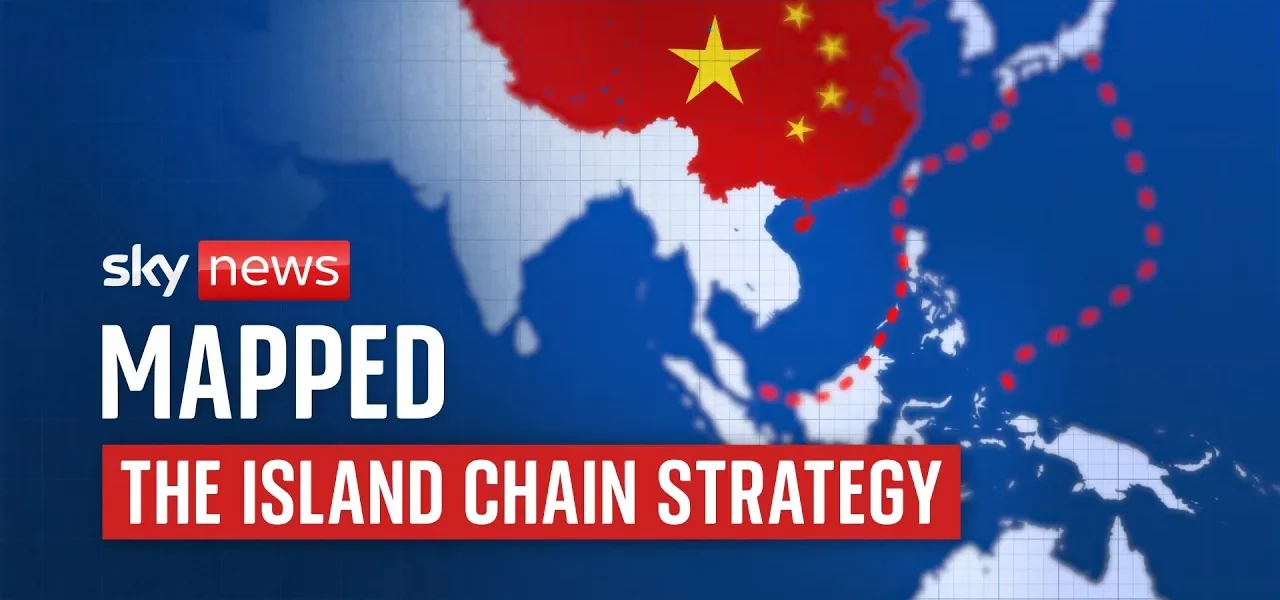High-Stakes Competition: China vs. United States

This article delves into the complex geopolitical rivalry between China and the United States, examining strategic military maneuvers, the significance of island chains, and the broader implications for global power dynamics.
Introduction
The competition between China and the United States has escalated to a level where it resembles a high-stakes game of chess, played out in the air, on the seas, and across nations. The stakes are high, and the consequences of miscalculations could lead to significant military confrontations. Central to this strategic rivalry are the various island chains in the Pacific, which serve as critical points of military presence and influence for the United States. This article will explore these island chains, their historical context, and their importance in the ongoing power struggle between these two nations.
The Historical Context of U.S.-China Relations
The Post-Cold War Shift
Following the Cold War and the dissolution of the Soviet Union, the United States recognized China as a burgeoning economic power. The U.S. aimed to contain this rising power in the Pacific waters while safeguarding its own interests. However, the geographical distance of approximately 11,000 kilometers presented a unique challenge.
John Foster Dulles and the Island Chain Strategy
The solution to this challenge came in the form of the island chain strategy, conceptualized by John Foster Dulles in the 1950s. This strategy was designed to curb the spread of communism by establishing a network of U.S. military bases and alliances across the Pacific. Key aspects of this strategy include:
- Extending U.S. influence through naval bases
- Access to allied nations’ military facilities
- Stationing troops on strategically important islands
These military installations create a robust chain of defense against China, which claims these waters as its own.
The First Island Chain: A Defensive Perimeter
Geographical Significance
The first island chain stretches from Japan through Taiwan and the Philippines to the Malay Peninsula. This strategic line of defense is vital for preventing the expansion of China’s military influence into the Pacific Ocean.
Taiwan: The Unsinkable Aircraft Carrier
At the heart of this island chain is Taiwan, often described as an “unsinkable aircraft carrier.” Its geographical position is crucial for U.S. military strategy, as it allows for the effective monitoring of Chinese naval movements and serves as a critical line of defense against potential Chinese aggression.
U.S. and China’s Competing Claims
While the U.S. acknowledges China’s claim over Taiwan under the One China Policy, recent mixed signals from the Biden administration have heightened tensions. Should China attempt to take control of Taiwan unilaterally, it could disrupt the entire security architecture of the Indo-Pacific, giving China a significant advantage.
The Second Island Chain: Guam’s Strategic Importance
Guam: A Key Military Base
Guam plays a pivotal role in U.S. military strategy in the Pacific. As a major military base housing thousands of troops, it serves as a critical launch point for operations in the region. This island is not only a stronghold for U.S. forces but also a potential target for Chinese military action.
The Third Island Chain and Broader Implications
Geopolitical Landscape
The third island chain extends down to New Zealand, covering vast areas of the Pacific Ocean. Although these islands may seem insignificant on a map, they are crucial for ensuring the security of international shipping routes and maintaining a balance of power in the region.
China’s Military Modernization
In response to the perceived threats from the U.S., China has been modernizing its military capabilities. Key developments include:
- The largest naval fleet globally
- Advanced hypersonic missile technology
- A new generation of aircraft carriers, exemplified by the Fujian
This modernization represents a direct challenge to U.S. naval power in the region and raises the specter of increased military confrontations.
Conclusion
The ongoing competition between China and the United States is characterized by complex military strategies and geopolitical maneuvering. The island chains are not just geographical features; they symbolize the broader struggle for dominance in the Indo-Pacific. As tensions mount, it is imperative for both nations to navigate this rivalry carefully, lest miscalculations lead to catastrophic consequences. The ultimate goal of controlling the Indo-Pacific remains a prize neither side is willing to concede. For those interested in staying informed on this crucial topic, we invite you to explore our related articles on U.S.-China relations and military strategy in the Pacific.
“`




